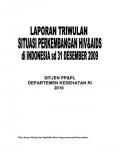What's New
Displaying results 3411 - 3420 of 4052
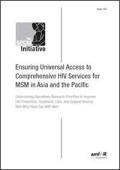
Resource | Publications,
Current statistics likely describe only a fraction of men who have sex with men (MSM) at risk for HIV. There are many more MSM than those who identify as gay or transgender. In Asia, as in many other places in the world, there are men who have sex with both men and women but do not identify as gay or do not associate any particular identity with their sexual behavior. The Asian Epidemic Model estimates that there are 10 million MSM in Asia, some of whom have sex with women or are married. It also predicts that if HIV prevention does not improve from 2007 levels, MSM will soon account for the largest proportion of people living with HIV in Asia. Despite these alarming estimates, rates of HIV infection among MSM in Asia and the Pacific have largely been hidden.
This report summarizes an assessment that was carried out in early 2009 to identify priorities for operations research to better understand effective models for HIV prevention, treatment, care, and support among MSM in Asia and the Pacific.
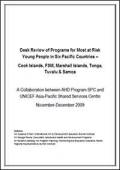
Resource | Publications,
Across the Pacific region, youth population between 10-25 years of age represents about 56% of the pacific population of 9.5 million, with 37% under the age of 14 years. The region's median age is 21 years. UNICEF, UNFPA and SPC jointly supports 10 countries across the Pacific to deliver programs targeting the sexual and reproductive health needs of young people. A 2007 Review of the Adolescent Health and Development (AHD) Program recommended specifically targeting vulnerable, marginalised and most at risk groups of young people. It also noted that specific interventions for this group were inadequate. As a result, the AHD Program is reviewing its strategies to assess the extent to which the MARYP approach has been used, with a view to strengthening program results and outcomes.
The purpose of the assignment, as stated in the Terms of Reference, was to collect information to identify the context, groups and location of Most at Risk Young People in the Pacific and determine the extent to which specific interventions have been implemented to reach this group of young people.
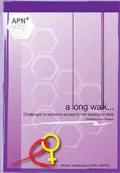
Resource | Publications,
In Asia, HIV prevalence among women and girls is increasing; 40% of HIV-positive young people in south and south-east Asia are women and girls. According to UNESCO, over one million youth between the ages of 15 to 24 in south Asia are infected with HIV, and more than half (62%) are young women. In Cambodia, half of all new infections occur in married women and another one third occurs via vertical transmission from mother to child; since 2006 more women than men in Cambodia are reported to have AIDS. Many women diagnosed as HIV-positive are mothers and it is important to keep them healthy in order to have optimal health and well being outcomes for themselves and their children.
This research study aims to examine the challenges that these increasing numbers of HIV positive
women and children face in getting access to antiretroviral drugs (ARVs) and HIV services in Asia. The study was designed and conducted by women living with HIV in six Asian countries. It was carried out throughout 2008, under the direction of the women’s working group of the Asia Pacific Network of people living with HIV (APN+).

Resource | Publications,
Pacific youth are central to the HIV response in the region. As of 2007, 4,103 new cases of HIV were reported in the region. The majority of these cases were people between the ages of 15 and 29. Even though the number of reported HIV cases is relatively low, other indicators of risk and vulnerability such as STIs are high among youth aged 15 to 24.
Whilst education on sexual health including HIV has improved over the past 10 years, getting young people to recognise their risks for HIV and STI infection and to adopt safe behaviour remains a challenge.
The development of the 2009 Pacific Youth Festival Safe Festival campaign primarily stemmed from lessons learned during the 1st Pacific Youth Festival–Safe Festival Campaign, which resulted in the following recommendations:
• Involvement of the target group at all stages of the campaign – planning, development, implementation, monitoring and evaluation
• Use of the peer to peer approach to disseminate information and products and provide
services and support
• Development of BCC materials that participants wear or use
• Distribution of both male and female condoms
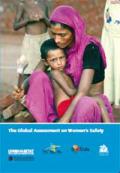
Resource | Publications,
Many women and girls face domestic violence not only in their homes and in relationships, but also in public spaces due to poor choices in urban design and poor management of those spaces. In practical terms this can relate to factors such as inadequate street lighting, unsafe underpasses, ineffective community policing and lack of rehabilitation programmes for those involved in antisocial use of public spaces. During times of conflict or social unrest, those factors can further exacerbate the risk of gender-based violence.
UN-HABITAT takes an active role in the documentation and exchange of best practices and lessons learned to improve safety and security in cities. To this end, UN-HABITAT has collaborated with the Huairou Commission, Women in Cities International and Red Mujer y Habitat to conduct this Global Assessment on Women’s Safety, which is an extensive review of tools and strategies promoting women’s safety on the global, regional, national and local levels. This has resulted in the creation of a database of over 200 institutions, local authorities and grassroots initiatives working on women’s safety. This helps with information sharing and building of global and regional networks.
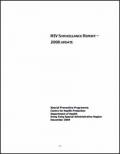
Resource | Publications,
Hong Kong, located in Asia the new burning place of HIV infection, is still having a relatively low prevalence of HIV infection. While sexual transmission is the predominant route of transmission in Hong Kong, an upsurge of infection in injecting drug users is a concern from the experience in other Asian localities. Various public health measures in Hong Kong have kept the HIV prevalence of drug users at low level, as compared with neighbouring cities.
This annual surveillance report on HIV/AIDS is an initiative of Special Preventive Programme (SPP), Centre for Health Protection of the Department of Health. This report serves to provide information for strategic planning of services and intervention activities for the prevention, care and control of HIV/AIDS. Following a commentary, data collected from the four main components of our surveillance programme (the HIV/AIDS voluntary reporting system, serosurveillance studies, Social Hygiene Service caseload statistics and risk behaviour studies) are presented as tables and graphs.
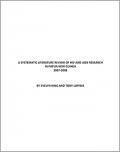
Resource | Reviews and Snapshots,
Papua New Guinea (PNG) is currently facing a rapidly expanding HIV epidemic. Although HIV interventions and initiatives are underway, there are questions related to the nature and impact of the epidemic, as well as questions related to the effectiveness of the national response.
The primary objectives of the review were to systematically collect and review studies on HIV, AIDS, STIs and STDs conducted in PNG between 2007 and 2008; to assess the quality and reliability of these studies; and to synthesize the research findings under common thematic areas. The secondary objective of the review was to identify relevant recommendations for researchers, policy makers, practitioners, and stakeholders.
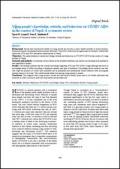
Resource | Reviews and Snapshots,
Sexual and reproductive health of young people has become a major health problem in recent decades. Recent and rapidly increasing Human Immune Defi ciency Virus (HIV) rates show an urgent need for Sexually Transmitted Infections (STIs) and HIV prevention interventions in Nepal. This paper attempts to assess knowledge, attitude and behaviour on STIs/HIV/AIDS in the context of young peoples of Nepal.
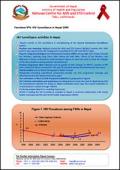
Resource | Fact Sheets,
HIV Surveillance Activities in Nepal:
- Nepal’s priority in HIV surveillance is strengthening of the Second Generation Surveillance system.
- Routine case reporting: National Centre for AIDS and STD Control (NCASC) receives HIV, AIDS and STI case reports from HIV Testing and Counseling (VCT), ART and PMTCT sites
- Regular Integrated Biological and Behavioural Surveys (IBBS) among High Risk Groups (Female Sex Workers, Injecting Drug Users, Men having Sex with Men, Clients of Sex Workers, and Migrants) is being conducted by epidemiological regions in every two year to track the changes in the HIV prevalence and associated risk behaviours.






